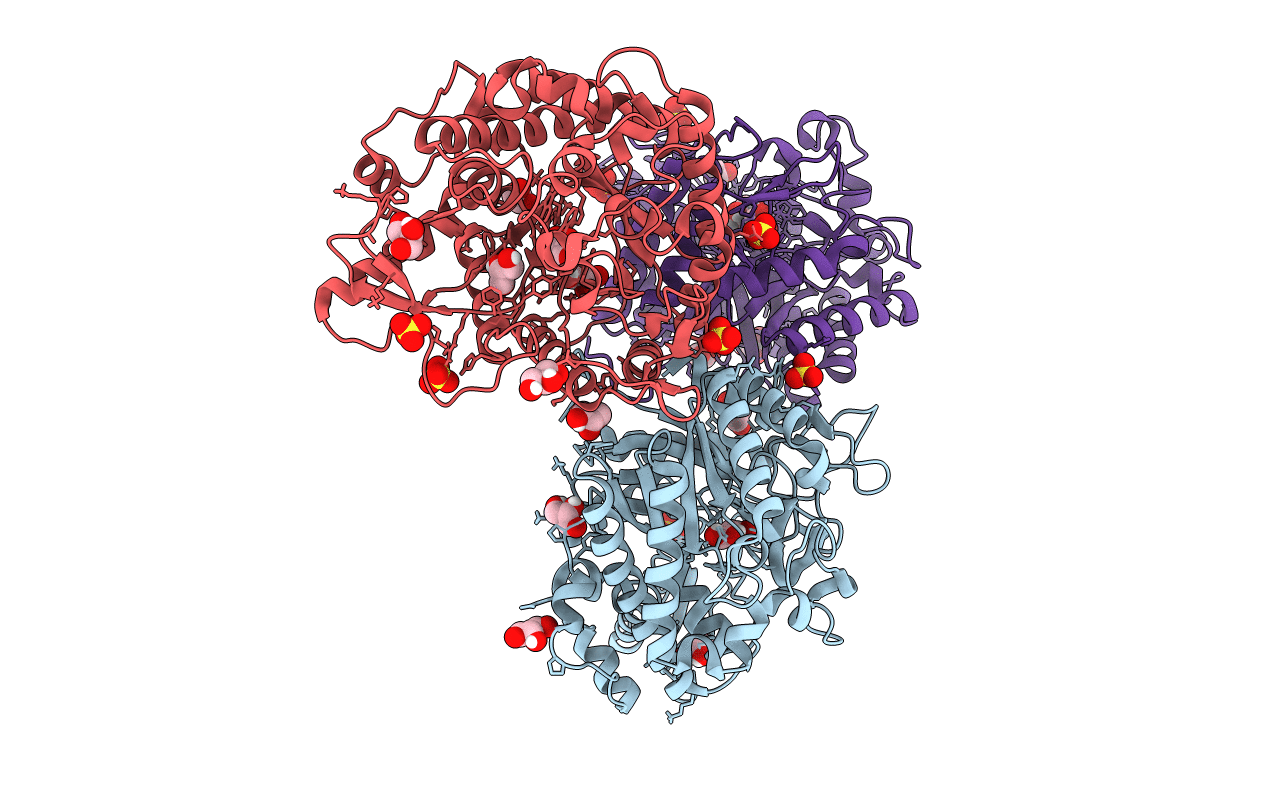
Deposition Date
2017-04-25
Release Date
2018-08-08
Last Version Date
2024-05-08
Entry Detail
PDB ID:
5NS7
Keywords:
Title:
Crystal structure of beta-glucosidase BglM-G1 mutant H75R from marine metagenome
Biological Source:
Source Organism:
marine metagenome (Taxon ID: 408172)
Host Organism:
Method Details:
Experimental Method:
Resolution:
1.54 Å
R-Value Free:
0.17
R-Value Work:
0.15
R-Value Observed:
0.15
Space Group:
P 43


